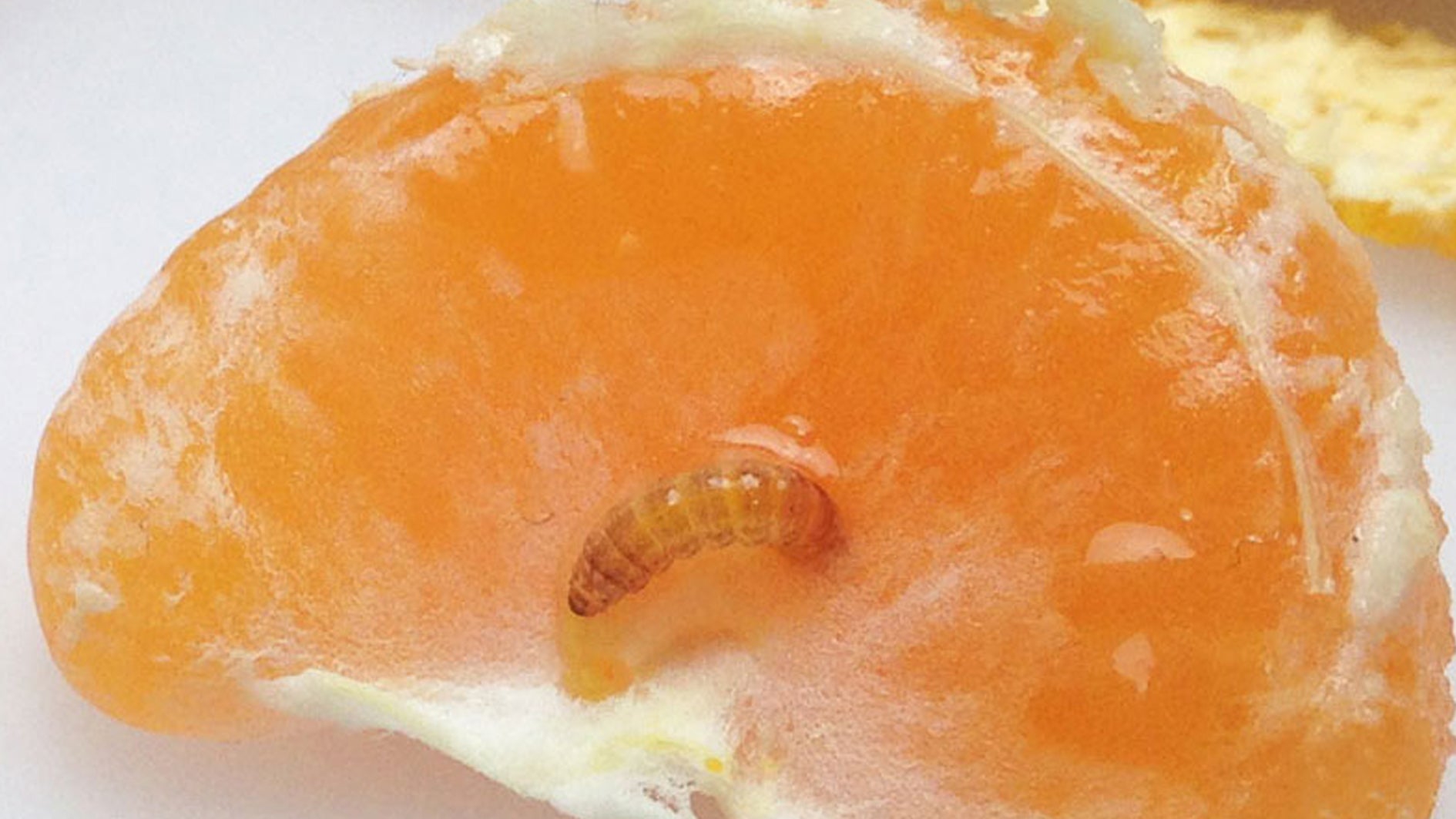
Guava Moth
16 Oct, 2021
Originally from Australia, Guava Moth was first found in New Zealand in Northland in 1997.
The pest damages a wide range of fruit including feijoas, guavas, macadamia nuts, stone fruit and citrus. Female moths lay their eggs on the fruit, after hatching the larvae burrow into the flesh, causing significant damage and loss.
Guava moths are speckled black and white with a wingspan of approximately 15mm, while larvae are pink and can grow up to 8mm long. Guava moth can breed all year round
Signs to look out for include: premature fruit drop, exit holes or small discolorations, fruit may appear bruised, during the later stages the larvae’s excrement may be visible. A pin-prick sized hole from the larvae burrowing in can sometimes be seen.
Prevention
When tackling the problem it’s worth coordinating with neighbours to help avoid the build up of severe infestations on surrounding properties.
Prevent the moth from laying their eggs on the fruit by draping Bug Net over the tree and pinning it to the ground. Alternatively you can cut the net into sections and wrap around fruit.
Moths pupate in fallen fruit and leaf litter so keep the area under your trees free of grass, weeds and fallen fruit. Avoid composting infected fruit as the moths can complete their lifecycle in some compost systems.
Note: Wait till after flowering before covering the trees with Bug Net to allow pollination.
Natural Treatment
Timing is critical, as soon as flowers start to drop and fruit starts to form spray with GroSafe BioNeem this is when the female lays her eggs, which hatch and bore into the fruit.
Remove infected fruit and dispose of carefully to avoid spreading the larvae, avoid composting it on your property.
If you have chickens, fencing them in around your fruit trees will also help kill the grubs as they pupate in the soil.
Other Treatment
Current methods of control are somewhat limited. Use multiple methods for best results, and if possible work along with your neighbours for better control.
The best time to treat for Guava moth is when the fruit start to develop just after the flowers have fallen from the tree.
Monitor numbers or solve low-level infestations by placing Guava Moth Traps in your trees. One trap per 3 trees should be enough. The trap uses a pheromone that replicates the scent of the female moth, enticing the male moths into the trap and trapping them. Replace pheromone every 6 weeks with a Easy Trap Guava Moth Refill.
If you are catching 5 or more moths over a two week period spray with GroSafe BioNeem twice a week on and around fruit until you stop catching the moths. Be especially vigilant when the flowers fall and the fruit first starts to form as this is when the moths are laying their eggs.
When using sprays and chemicals always read the label and follow instructions carefully. Spray in the evening to avoid harming beneficial insects.